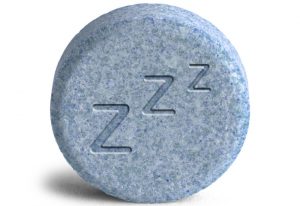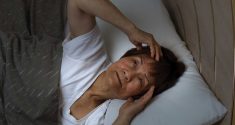Insomnia is one of the world’s oldest documented disorders; a devastating inability to either fall asleep or stay asleep. Although there are many medications for this illness, they are oftentimes ineffective or the side effects too serious to tolerate. Our inability to treat insomnia completely may be due to a misunderstanding of the disorder. According to new research, there may actually be five distinct types of insomnia, each with its own unique causes and treatment protocol.
Insomnia: Stealing Both Energy and Sleep
 Millions of people across the globe struggle with insomnia, yet it remains a very poorly understood illness. We know that insomnia can be caused by a variety of factors, including physical illness, hormone levels, mental factors, medications and lifestyle issues. Treatments can include behavioral therapies, sleeping medications and lifestyle changes that are geared towards restoring a healthy circadian rhythm.
Millions of people across the globe struggle with insomnia, yet it remains a very poorly understood illness. We know that insomnia can be caused by a variety of factors, including physical illness, hormone levels, mental factors, medications and lifestyle issues. Treatments can include behavioral therapies, sleeping medications and lifestyle changes that are geared towards restoring a healthy circadian rhythm.
Although the causes and treatments vary widely, the effects of insomnia are always devastating. People suffer sleepiness and fatigue throughout their days, making it difficult to function. They can have changes in cognitive performance and memory skills. They are more likely to get into accidents at work and on the road, which can be physically dangerous both to the sufferer and others. Last, people who do not sleep well have a higher risk of developing some of our most-feared physical illnesses, such as heart disease and stroke.
These increased risks form a huge collective public health risk. Up to 30-40 percent of Americans report having a bout of insomnia in the past year. Somewhere between 10 and 15 percent have chronic insomnia. Understanding more about this illness is key to reducing its effects on society and its devastating effects on individuals with the disease.
Researchers Identify Five Types of Insomnia
Scientists at the Netherlands Institute for Neuroscience looked at thousands of people who suffer from insomnia, carefully cataloging their symptoms and risk factors. They performed a wide variety of tests. Interestingly, almost all of their patients fit into one of five groups. These five sub-types each respond to a completely different style of treatment, which may be why so many people with insomnia struggle to find the right treatment. Let’s look a little more closely at each sub-type.
Type 1 or “Highly Distressed” Insomnia
Type 1 or “highly distressed” insomniacs suffer from high levels of neuroticism and distress. They often report feeling tense, depressed or otherwise struggle with negative emotions.
Types 2 and 3 Insomnia
Types 2 and 3 insomnia are suffered by people who are moderately distressed. Type 2 insomniacs are sensitive to rewards and other lifestyle modifications while Type 3 insomniacs are not.
Type 4 Insomnia
Type 4 insomnia is suffered by people who are “slightly distressed with high reactivity.” This means that they are not emotionally distressed on a regular basis, but that they can develop distress and insomnia when they have life events, stressors and other changes in environment.
Type 5 Insomnia
Type 5 insomniacs also exhibit lower levels of distress. However, unlike type 4, they do not tend to react to stressors as much.
What type are you? The answer depends on your unique personality and life circumstances. Are you often distressed, rarely upset or somewhere in the middle? Do you get pleasure from rewards and other positive events in your life? Do you tend to react emotionally to stressors? The answers to these questions may affect the way you respond to treatment. For example, people who are extremely distressed may need to deal with their high levels of emotion in order to get the sleep they need. Those who are not distressed but merely react to their environment, on the other hand, could likely sleep better if they reduced the daily stress in their lives.
Future Hope for Treatment

- Improve your sleep hygiene. Simple changes like turning off lights and screens in the hours before bed can make a huge difference in your sleep patterns.
- Find positive ways to deal with emotional distress. Relaxation techniques like meditation and yoga can make it easier for you to sleep and improve your mood in general, particularly if you believe you may be a “type 1” insomniac.
- Change the way you use your bedroom. This is known as “stimulus control therapy” and can be very important for people who struggle to sleep. Use your bed and your bedroom only for sleep and sex, so your body will begin preparing for sleep as soon as you enter.
- Get your circadian rhythm back on track. Getting up at the same time every morning and going to sleep at the same time every night can help to reset your circadian rhythm and eventually make it easier to live on a reasonable and restful schedule.
- Consider sleep restriction. Many people have successfully treated insomnia by partially depriving themselves of sleep for short periods, so they are able to reset their circadian rhythm and start falling asleep at a reasonable time again.
- Use melatonin, bright light and other means of tricking your internal clocks. Your body relies on different environmental cues to determine when it is time to sleep or wake.
There may someday be more effective insomnia therapies, tailored to the sub-type of insomnia that you belong to. Until then, simple lifestyle changes and home remedies are your best bet at getting the high quality sleep that you need to thrive.







